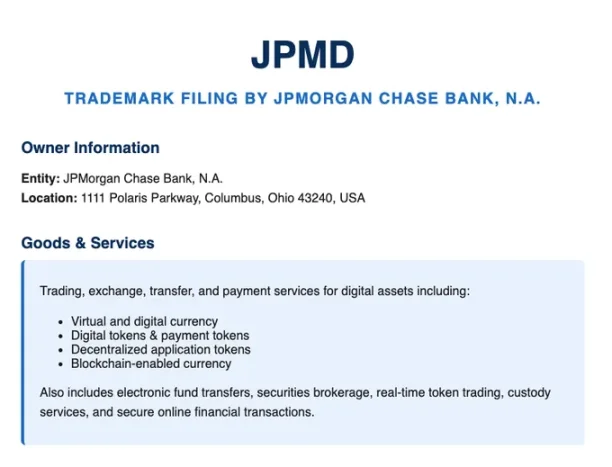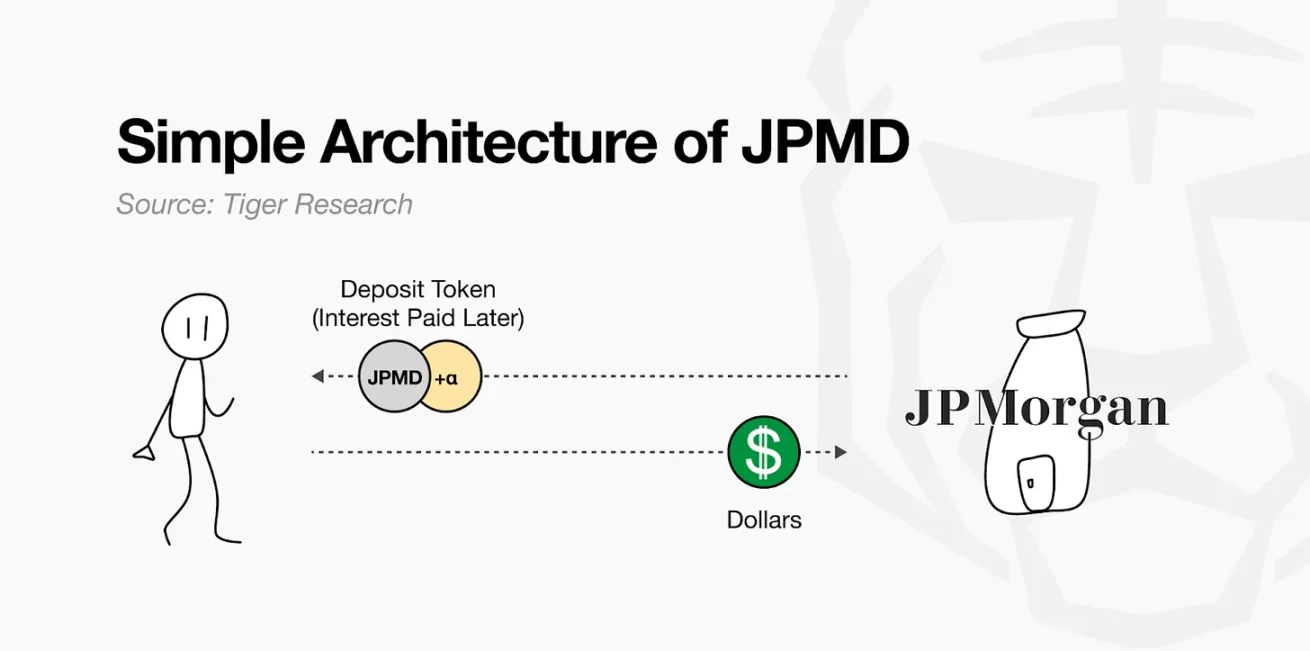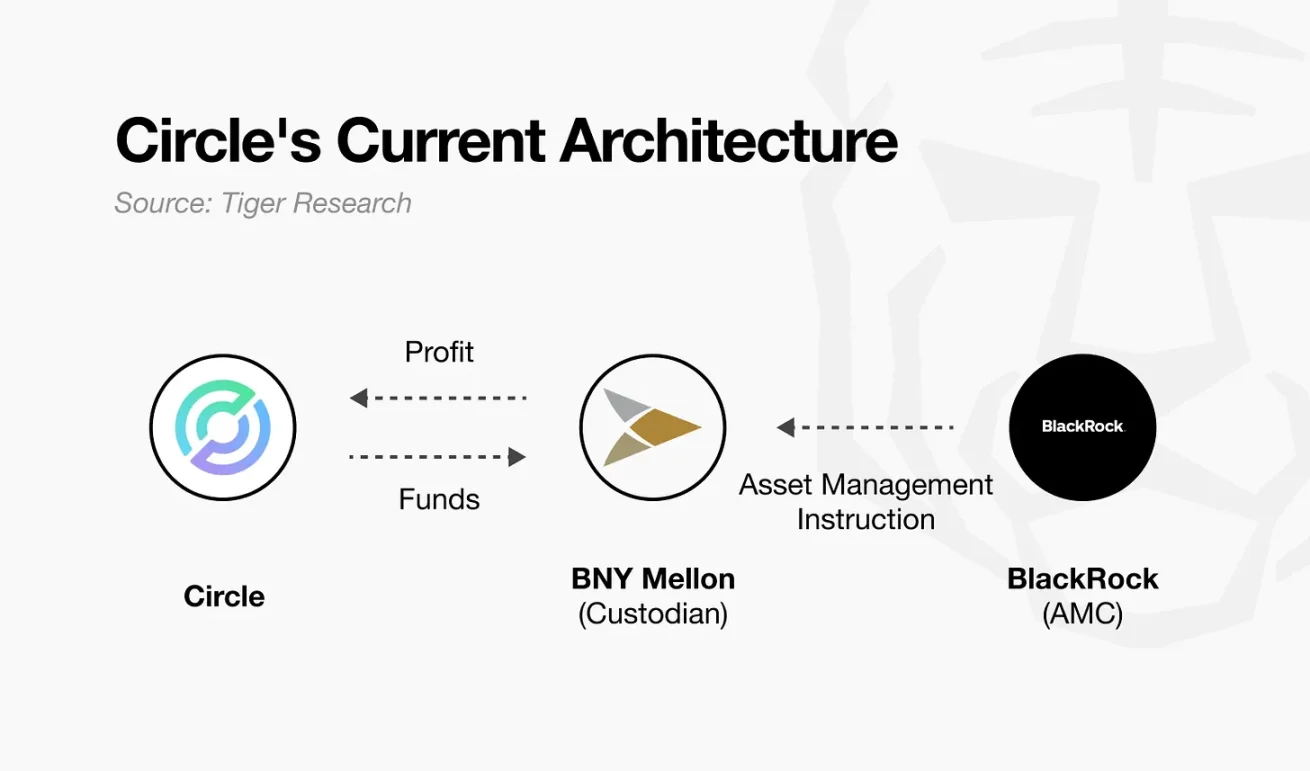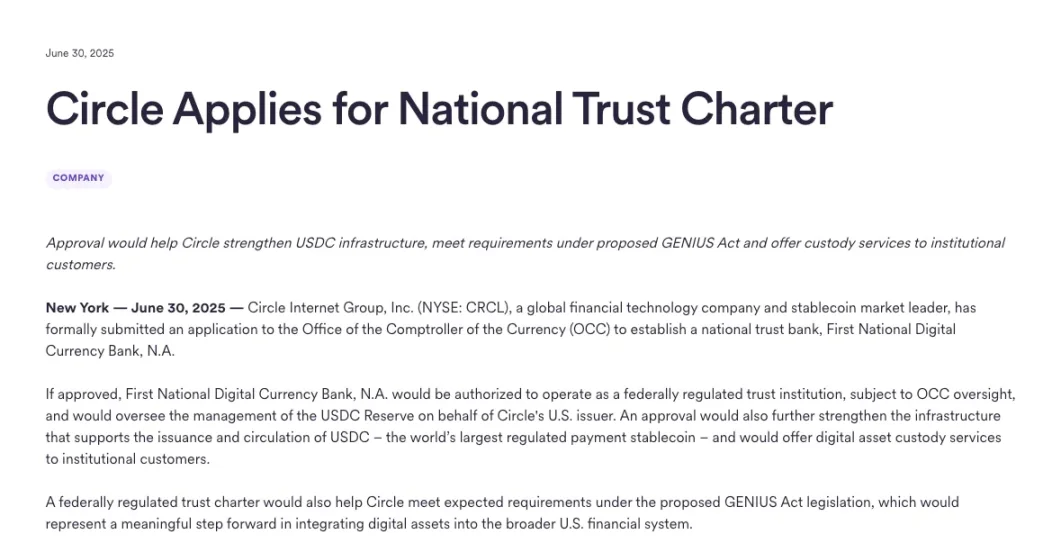From traditional financial institutions like JPMorgan Chase to crypto-native companies like Circle, participants from different backgrounds are actively laying out the on-chain financial ecosystem.
Written by: Tiger Research
Translated by: AididiaoJP, Foresight News
Summary
JPMorgan Chase has begun issuing deposit tokens on public chains, overlaying blockchain technology onto the existing financial order.
Circle is applying for a trust bank license, attempting to build a new financial order based on technology.
Two types of institutions are attacking traditional finance from different directions, forming a "bidirectional convergence" trend.
The ambiguity in value positioning may weaken their respective competitive advantages, necessitating a clear identification of core strengths and finding a balance.
New Competitive Landscape of On-Chain Financial Infrastructure
Blockchain technology is reshaping the fundamental architecture of global financial infrastructure. According to the latest report from the Bank for International Settlements (BIS), by the second quarter of 2025, the scale of global on-chain financial assets is expected to exceed $4.8 trillion, with an annual growth rate of over 65%. In this wave of transformation, traditional financial institutions and crypto-native companies are showing distinctly different development paths:
Traditional Financial Institution Representative: JPMorgan Chase
Adopting a "blockchain +" incremental reform strategy, embedding distributed ledger technology into the existing financial system. Its blockchain division, Onyx, has served over 280 institutional clients, processing an annual transaction volume of $600 billion. The newly launched JPM Coin has an average daily settlement volume exceeding $12 billion.
Crypto-Native Company Representative: Circle
Has built a fully blockchain-based financial network through the USDC stablecoin. Currently, the circulation of USDC has reached $54 billion, supporting 16 mainstream public chains, with an average daily transaction count exceeding 3 million.
Compared to the fintech revolution of the 2010s, the current competition presents three significant differences:
The focus of competition has shifted from user experience to infrastructure reconstruction.
The depth of technology has descended from the application layer to the protocol layer.
Participants have shifted from complementary relationships to direct competition.
JPMorgan Chase: Technological Innovation within the Framework of Traditional Financial Institutions

JPMorgan Chase has applied for a trademark for its deposit token "JPMD"
In June 2025, JPMorgan Chase's blockchain division Kinexys began trial operations of the deposit token JPMD on the public chain Base. Previously, JPMorgan Chase primarily applied blockchain technology through private chains, but this marks the first time a traditional financial institution has directly issued assets and supported circulation on an open network.

JPMD combines the characteristics of digital assets with traditional deposit functions. When customers deposit dollars, the bank records the deposit on its balance sheet while issuing an equivalent amount of JPMD on the public chain. This token can circulate freely while retaining the legal right to claim bank deposits, allowing holders to exchange it 1:1 for dollars and potentially enjoy deposit insurance and interest income. Existing stablecoin profits are concentrated among issuers, while JPMD creates a differentiated advantage by granting users substantial financial rights.
These features provide very attractive practical value for asset management institutions and investors, even allowing them to overlook some legal risks. For example, if on-chain assets like BlackRock's BUIDL fund use JPMD as a redemption payment tool, it could enable 24/7 redemptions. Compared to existing stablecoins that require separate exchanges for fiat currency, JPMD supports instant cash conversion while providing deposit protection and interest income opportunities, showing significant potential in the on-chain asset management ecosystem.
The launch of the deposit token by JPMorgan Chase is a response to the new capital flows and income structures formed by stablecoins. Tether generates approximately $13 billion in annual revenue, while Circle also creates considerable income through managing safe assets like government bonds. Although these models differ from traditional loan-to-deposit spreads, their mechanisms for generating income based on customer funds are similar to some banking functions.
However, JPMD also has limitations: its design strictly adheres to existing financial regulatory frameworks, making it difficult to achieve complete decentralization and openness of blockchain. Currently, it is only available to institutional clients. Nevertheless, JPMD represents a pragmatic strategy for traditional financial institutions to enter public chain financial services while maintaining existing stability and compliance requirements, and is seen as a representative case of the connection between traditional finance and the expansion of on-chain ecosystems.
Circle: Financial Reconstruction Native to Blockchain
Circle has established a key position in on-chain finance through the stablecoin USDC. USDC is pegged 1:1 to the dollar, with reserves consisting of cash and short-term U.S. Treasury bonds. With advantages such as low fees and instant settlement, it has become a practical alternative for corporate payment settlements and cross-border remittances. USDC supports 24-hour real-time transfers without the complex processes of the SWIFT network, helping businesses break through the limitations of traditional financial infrastructure.

However, Circle's existing business structure faces multiple constraints: BNY Mellon custodies the USDC reserves, and BlackRock manages asset operations, delegating core functions to external institutions. While Circle earns interest income, its actual control over assets is limited, and its current profit model is highly dependent on a high-interest-rate environment. Circle needs a more independent infrastructure and operational authority, which is a necessary condition for achieving long-term sustainability and income diversification.

Source: Circle
In June 2025, Circle applied to the Office of the Comptroller of the Currency (OCC) for a national trust bank license, a strategic decision that goes beyond mere compliance needs. The industry interprets this as Circle's transformation from stablecoin issuance to an institutional financial entity. The trust bank identity will enable Circle to directly manage reserve custody and operations, strengthening its internal control capabilities over financial infrastructure and creating conditions for expanding its business scope, laying the foundation for institutional digital asset custody services.
As a crypto-native company, Circle is adjusting its strategy to establish a sustainable operating system within the institutional framework. This transformation requires accepting the rules and roles of the existing financial system, at the cost of reduced flexibility and increased regulatory burden. The specific permissions obtained in the future will depend on policy changes and regulatory interpretations, but this attempt has already become an important milestone for measuring the establishment of on-chain financial structures within the existing institutional framework.
Who Will Dominate On-Chain Finance?
From traditional financial institutions like JPMorgan Chase to crypto-native companies like Circle, participants from different backgrounds are actively laying out the on-chain financial ecosystem. This evokes memories of the competitive landscape in the past fintech industry: technology companies entered the financial sector by implementing core financial functions like payments and remittances internally, while financial institutions expanded their user base and improved operational efficiency through digital transformation.
The key is that this competition breaks down the boundaries between the two sides. A similar phenomenon is emerging in the current on-chain financial field: Circle is directly performing core functions like reserve management by applying for a trust bank license, while JPMorgan Chase is issuing deposit tokens on public chains and expanding its on-chain asset management business. Both sides are gradually absorbing each other's strategies and fields, seeking new balance points from different starting points.
This trend brings new opportunities but also contains risks. If traditional financial institutions forcibly mimic the flexibility of technology companies, it may conflict with existing risk control systems. For instance, Deutsche Bank faced billions in losses due to clashes with legacy systems when implementing its "digital-first" strategy. Conversely, if crypto-native companies excessively expand their institutional acceptance, they may lose the flexibility that supports their competitiveness.
The success or failure of competition in on-chain finance ultimately depends on a clear understanding of one's own foundations and advantages. Companies must achieve an organic integration between technology and institutions based on their "unfair advantages," and this balancing ability will determine who the final winner is.
免责声明:本文章仅代表作者个人观点,不代表本平台的立场和观点。本文章仅供信息分享,不构成对任何人的任何投资建议。用户与作者之间的任何争议,与本平台无关。如网页中刊载的文章或图片涉及侵权,请提供相关的权利证明和身份证明发送邮件到support@aicoin.com,本平台相关工作人员将会进行核查。




